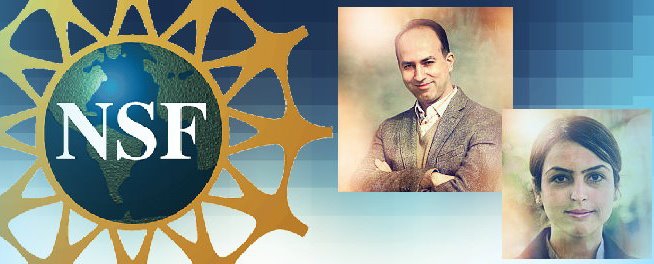Babak Heidari, is professor at Systems and Programming Faculty of the University and Negar Tavassolian is teaching at the ?aculty of Electronics and Computer Engineering. They both graduated from Iran�s Sharif Poly Technique University.
Heydari received an NSF CAREER Award to support development of a new theoretical framework based on game theory and complex network methods to model the impact of architecture of products and systems on technological innovation and market competition.
In addition, as part of his project, Heydari will create educational materials based on complexity sciences for children's science museum programs in New York City.
"We are increasingly relying on complex human-centric, socio-technical systems whose analysis, design and governance need new sets of lenses and perspectives. The traditional dichotomy of soft and hard sciences is disappearing, and we will be dealing with a continuum of methods and perspectives to tackle future problems such as complex systems," he notes.
"Some bridges have already been successfully built between otherwise isolated islands of traditional disciplines, but to go from a handful of bridges to a continuum of tools and methods useful for socio-technical systems requires a concerted effort by the academic community.
I am excited that an organization with the caliber of NSF has endorsed the interdisciplinary approach we are taking, and thankful that Stevens has given me this opportunity to define my research in a quite non-traditional way."
Heydari's other research at Stevens includes investigations in modeling hybrid human-autonomous networks; spatial diffusion of risk; and silicon-based communication circuits and systems.
Tavassolian received her NSF CAREER Award to begin an immediate project that will apply millimeter-wave technology to biomedical imaging applications in an effort to diagnose skin cancer tumors earlier and more effectively than is currently possible. By dividing bandwidths into channels, each equipped with small antenna units, she proposes to create higher-contrast, better-depth imagery; proof-of-concept experiments will be performed at Massachusetts General Hospital. As part of the project, Tavassolian will also create educational programs in partnership with Liberty Science Center in Jersey City and a new Stevens graduate-level course in the biomedical applications of electromagnetics.
"Skin cancer is the most common and fastest-growing of all cancer types, with more than 3.5 million new cases detected and billions of dollars of associated treatment costs in the U.S. last year alone," she notes. "Skin cancer is generally diagnosed through visual inspection by a dermatologist, who orders biopsy in cases where cancer is suspected, but visual inspection is subjective and susceptible to human errors. There is a definite need for the innovative, low-cost and portable imaging technology we are offering in this area."
Tavasollian's other work at Stevens includes research on radio frequency and microwave technologies, bioelectromagnetics and micro-electromechanical systems (MEMS) with additional biomedical applications. She previously performed research at MIT's David H. Koch Institute for Integrative Cancer Research, investigating a magnetic relaxation-based platform for non-invasive monitoring of patients' hydration states.
By ISNA
# Tags











